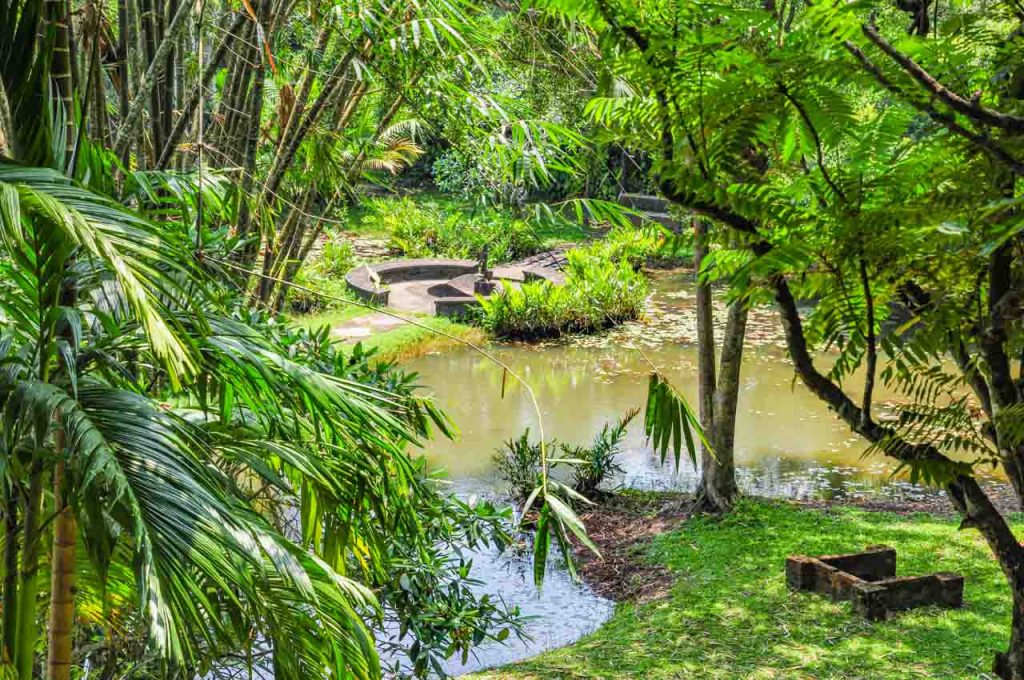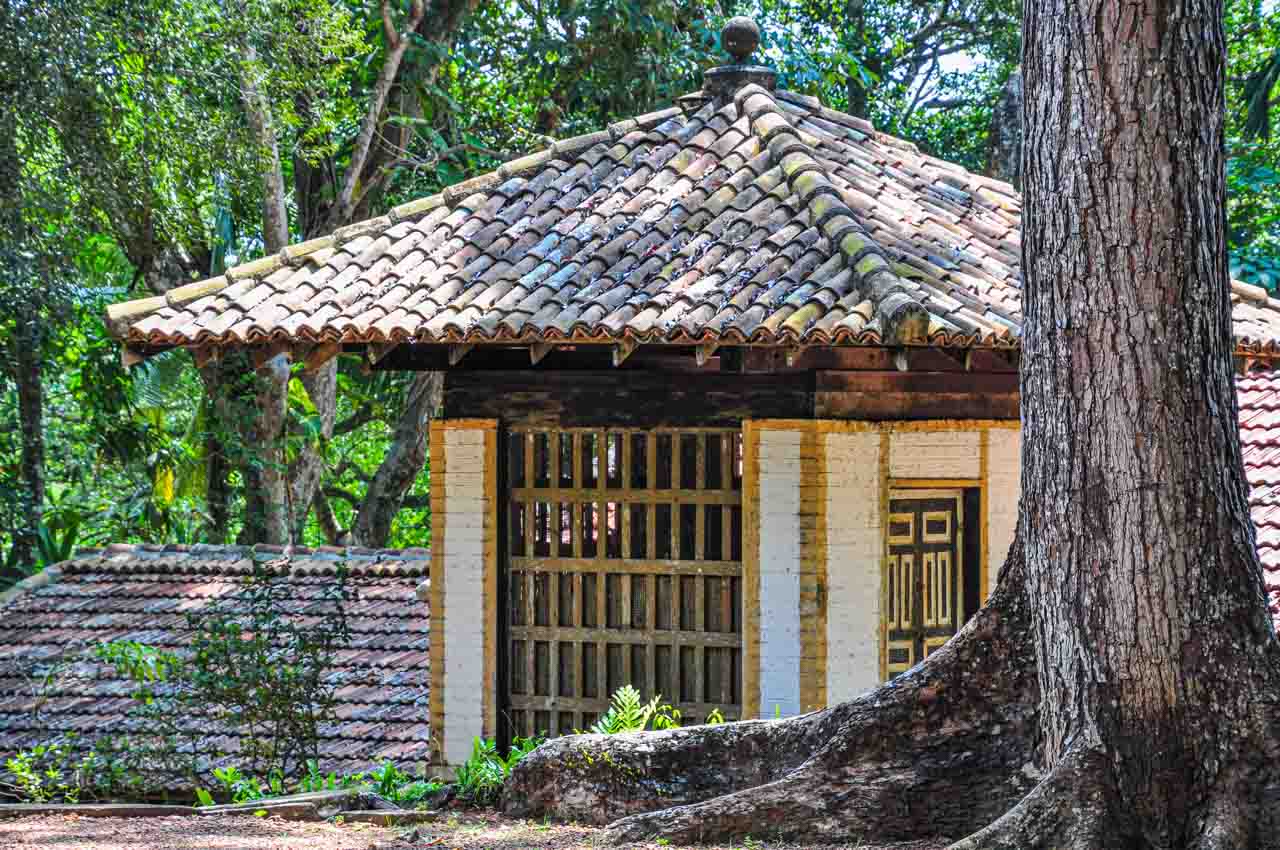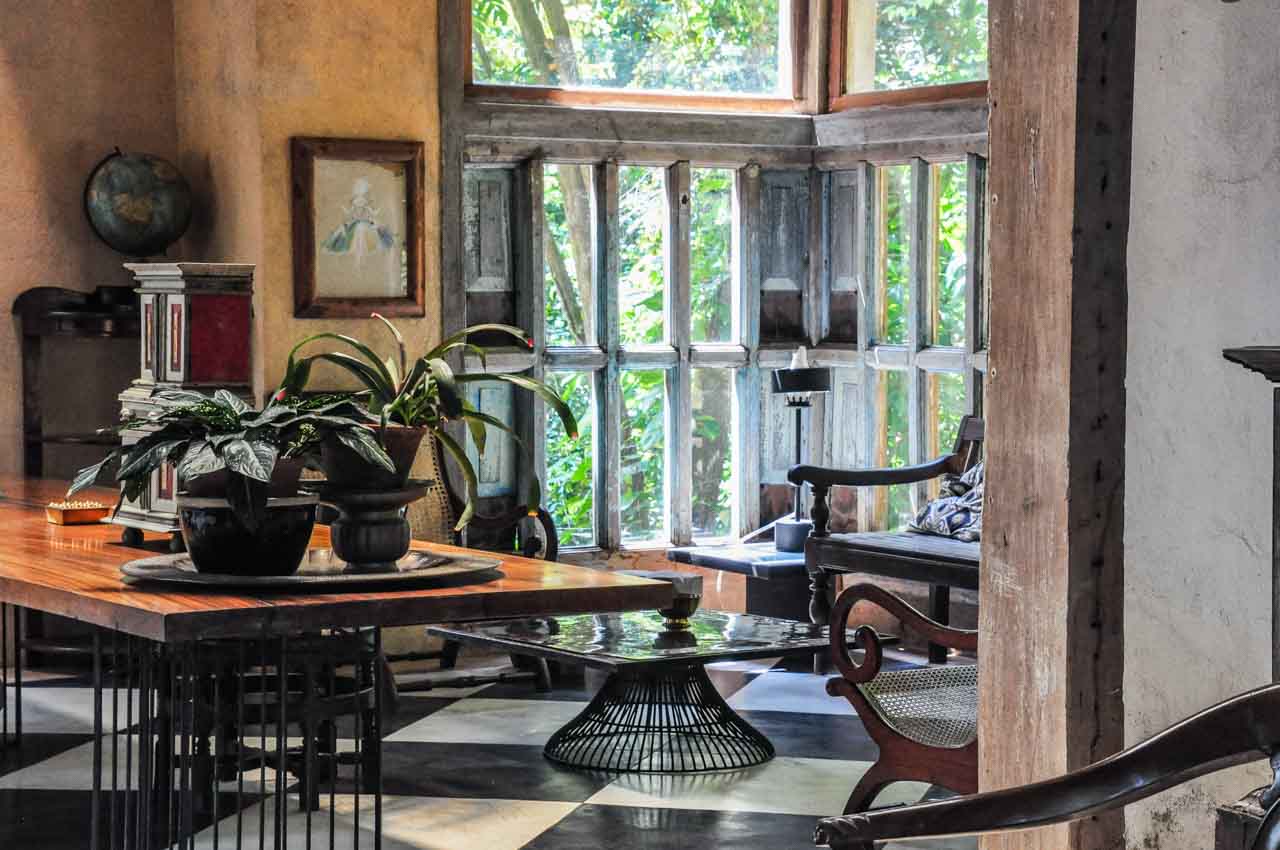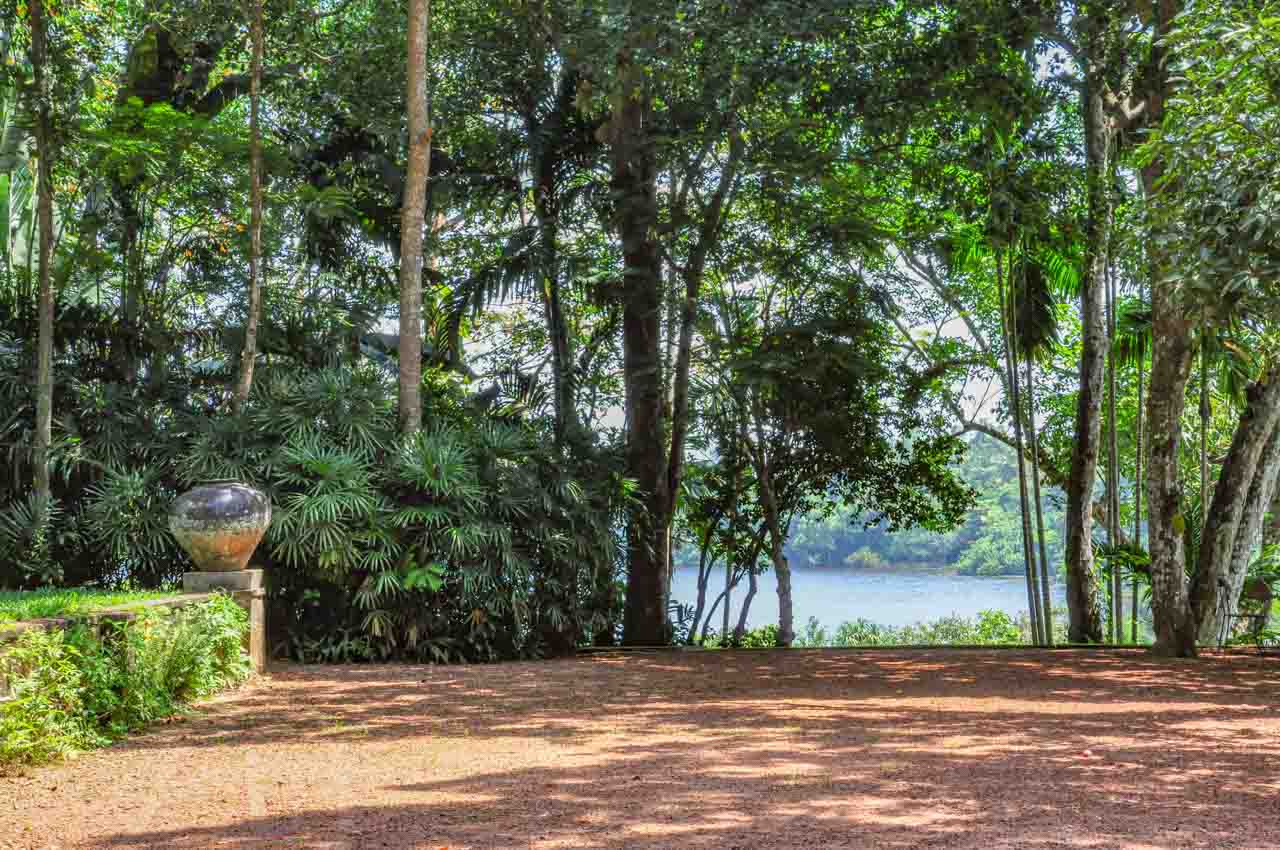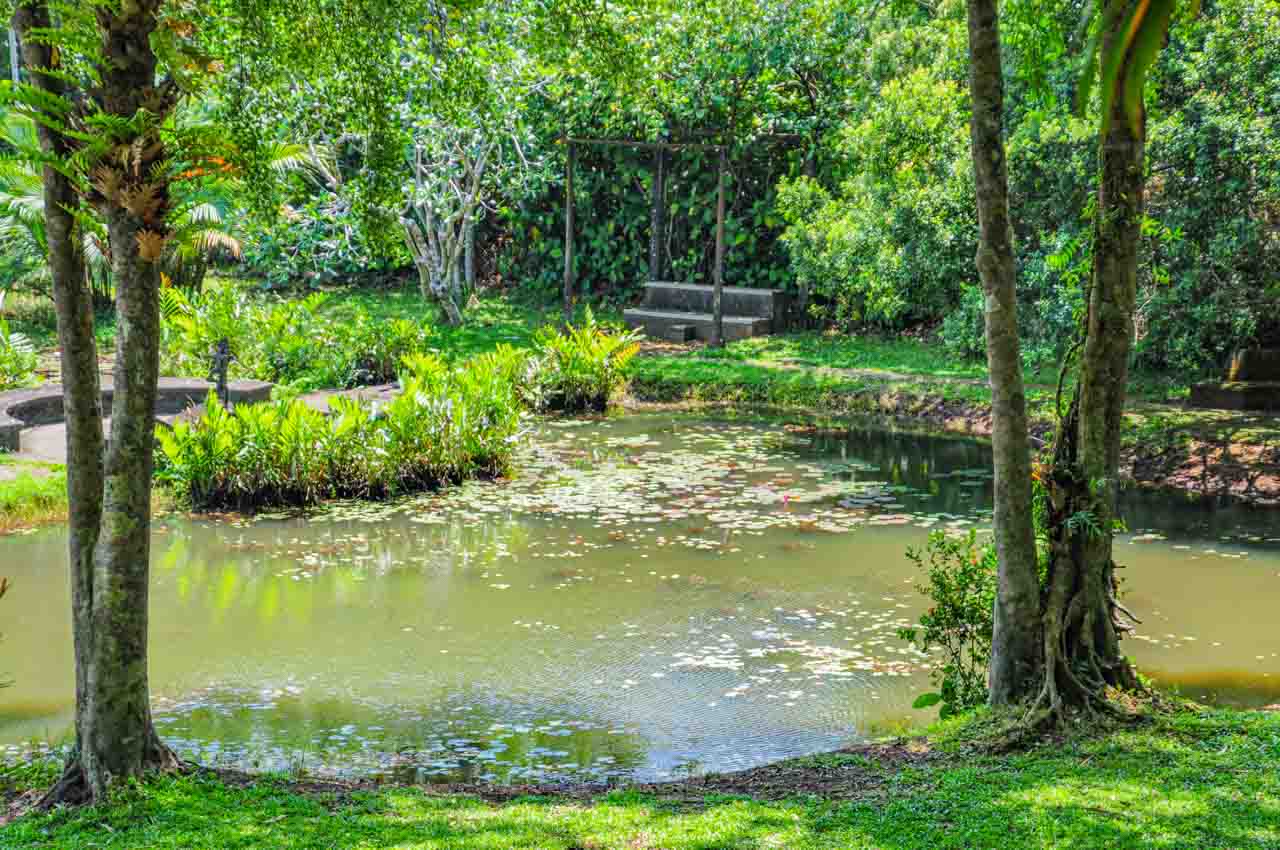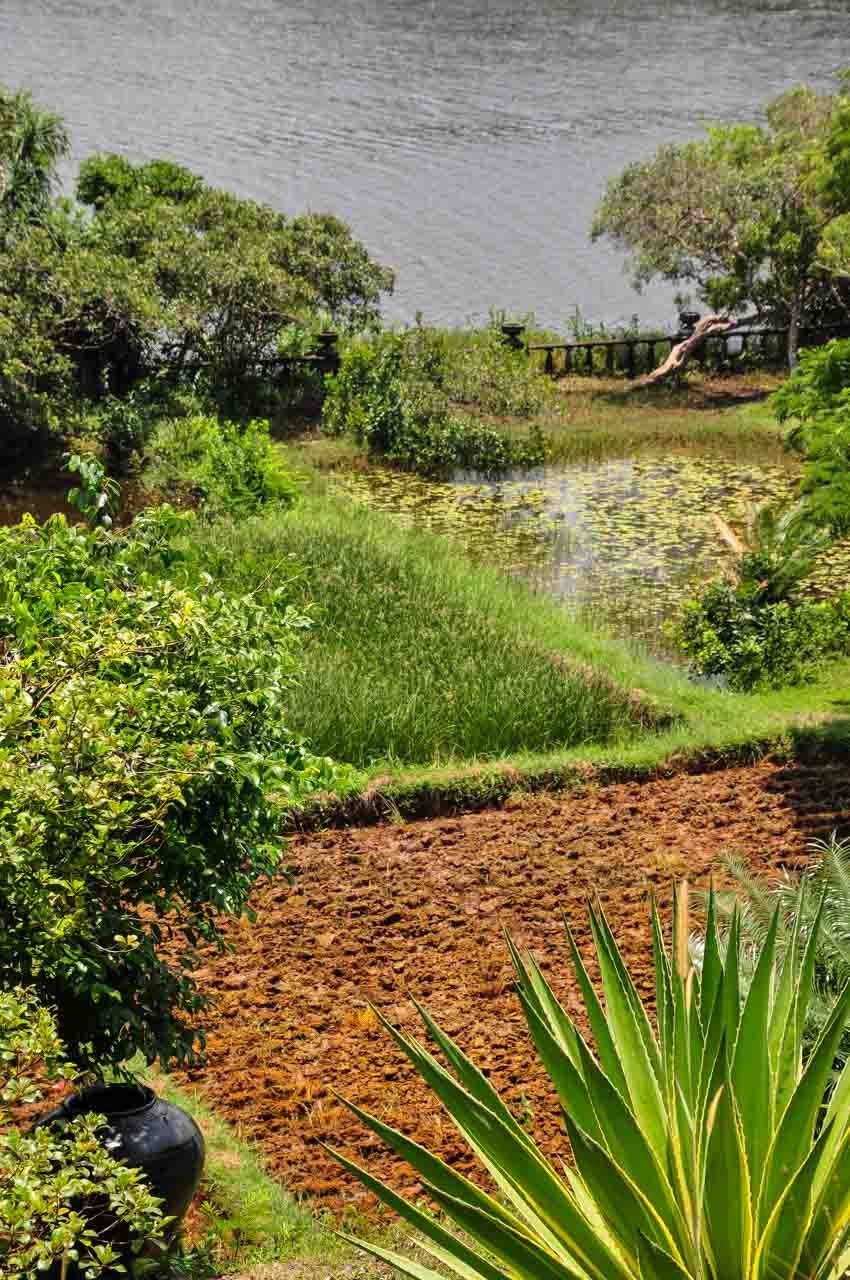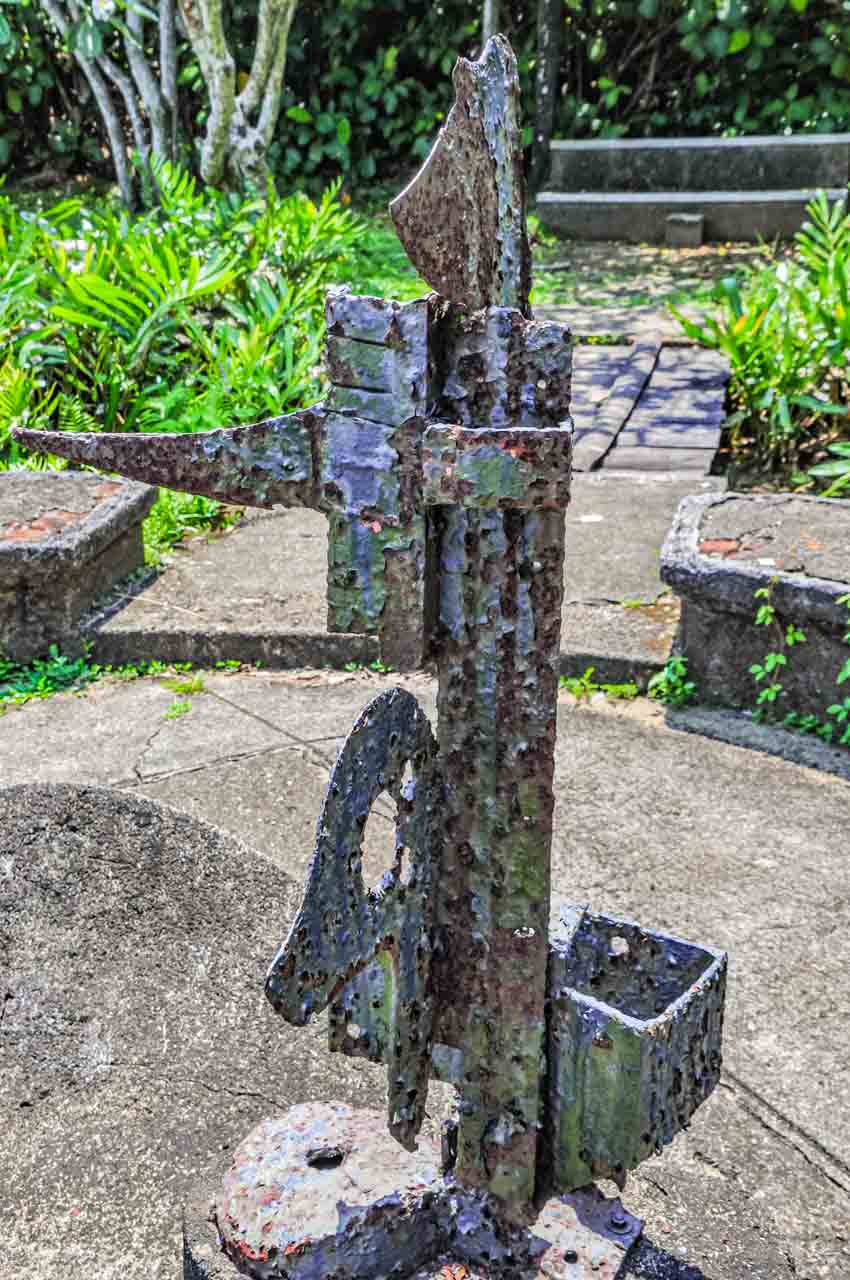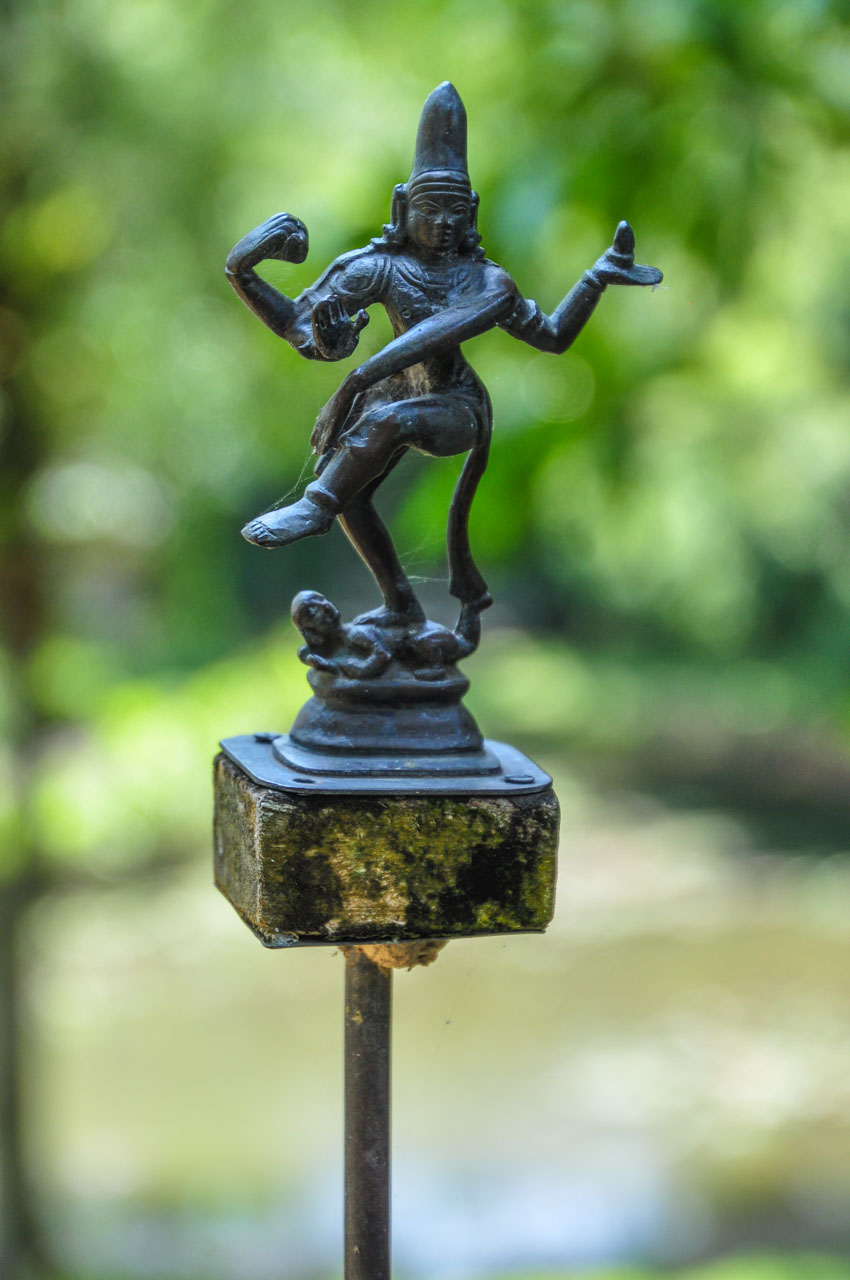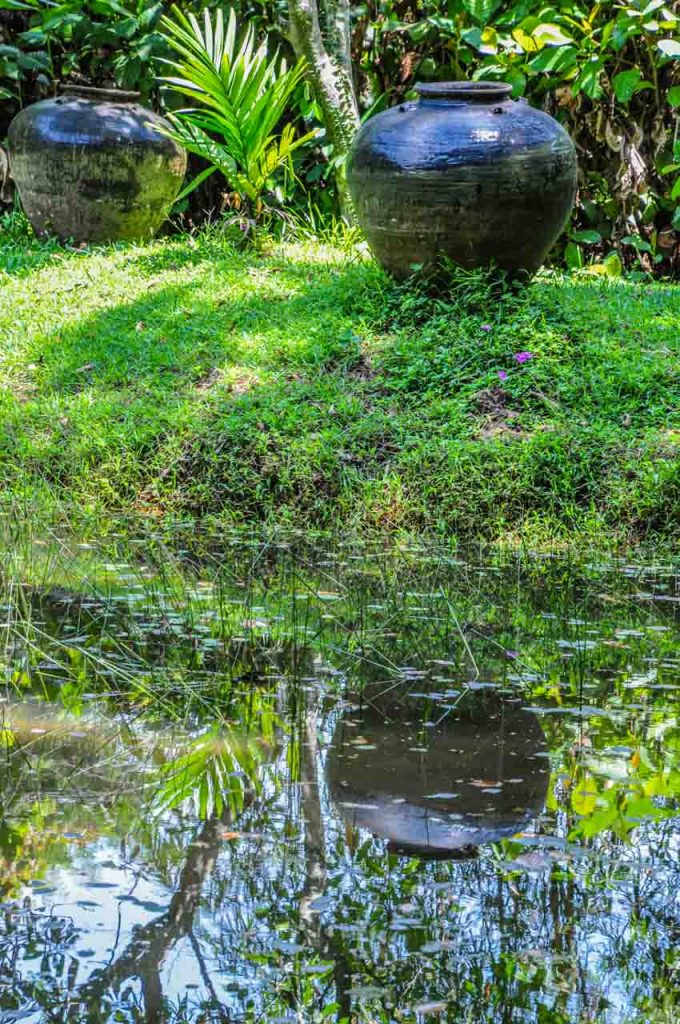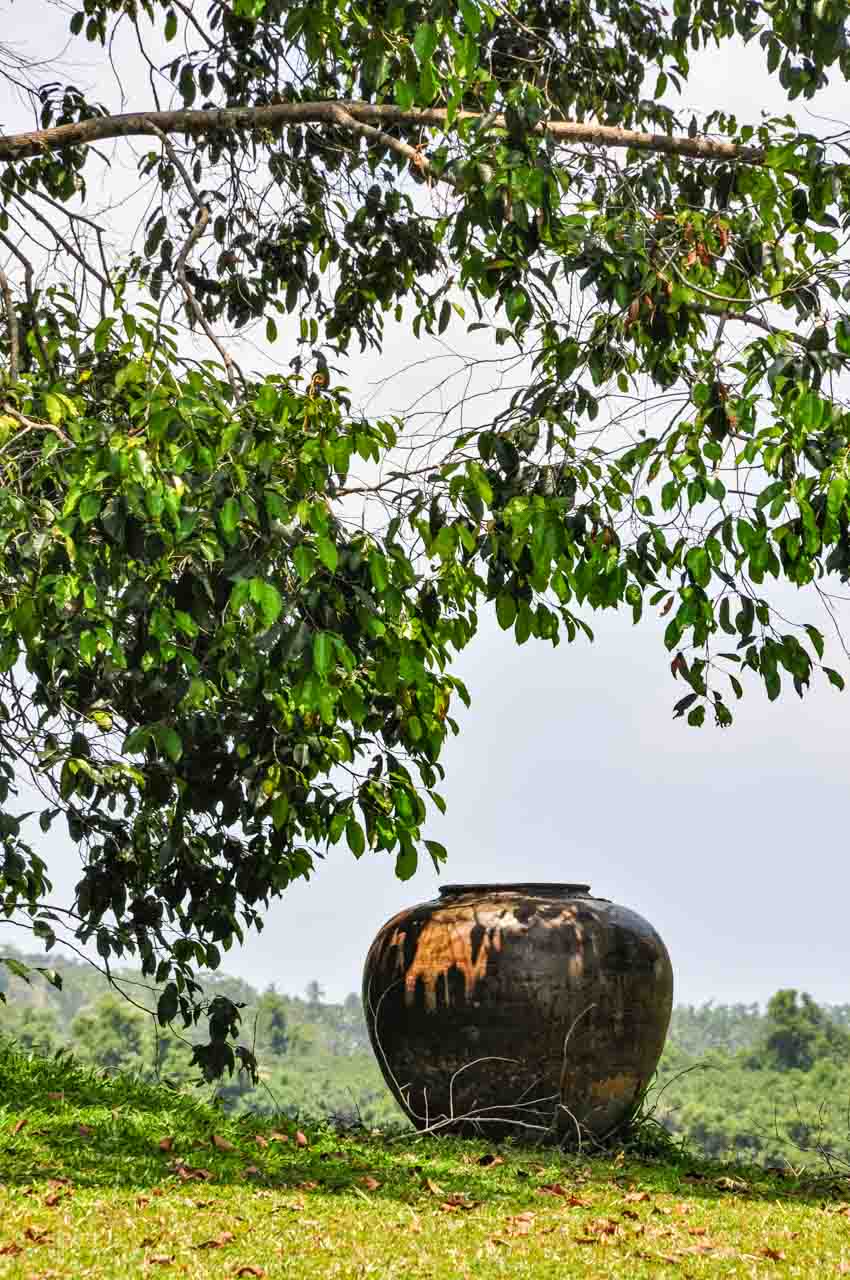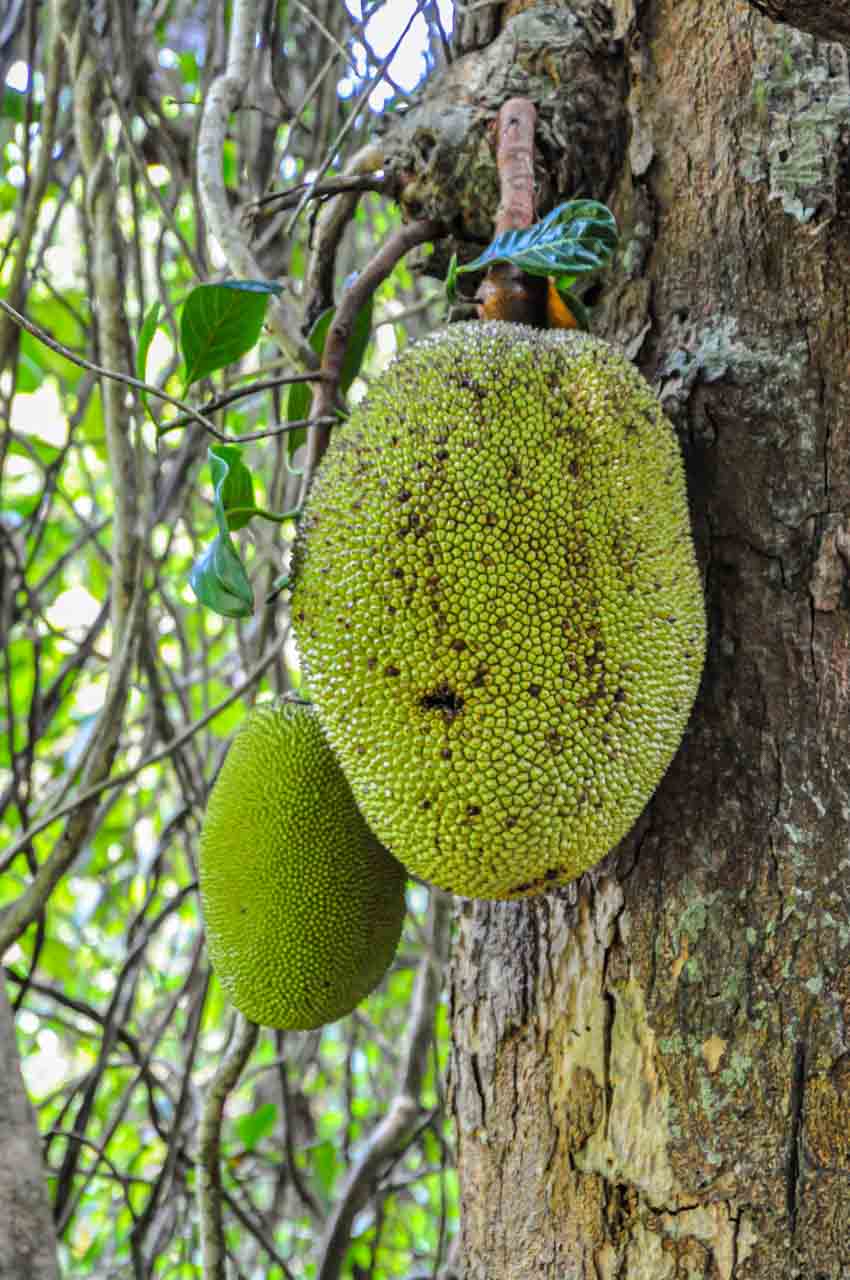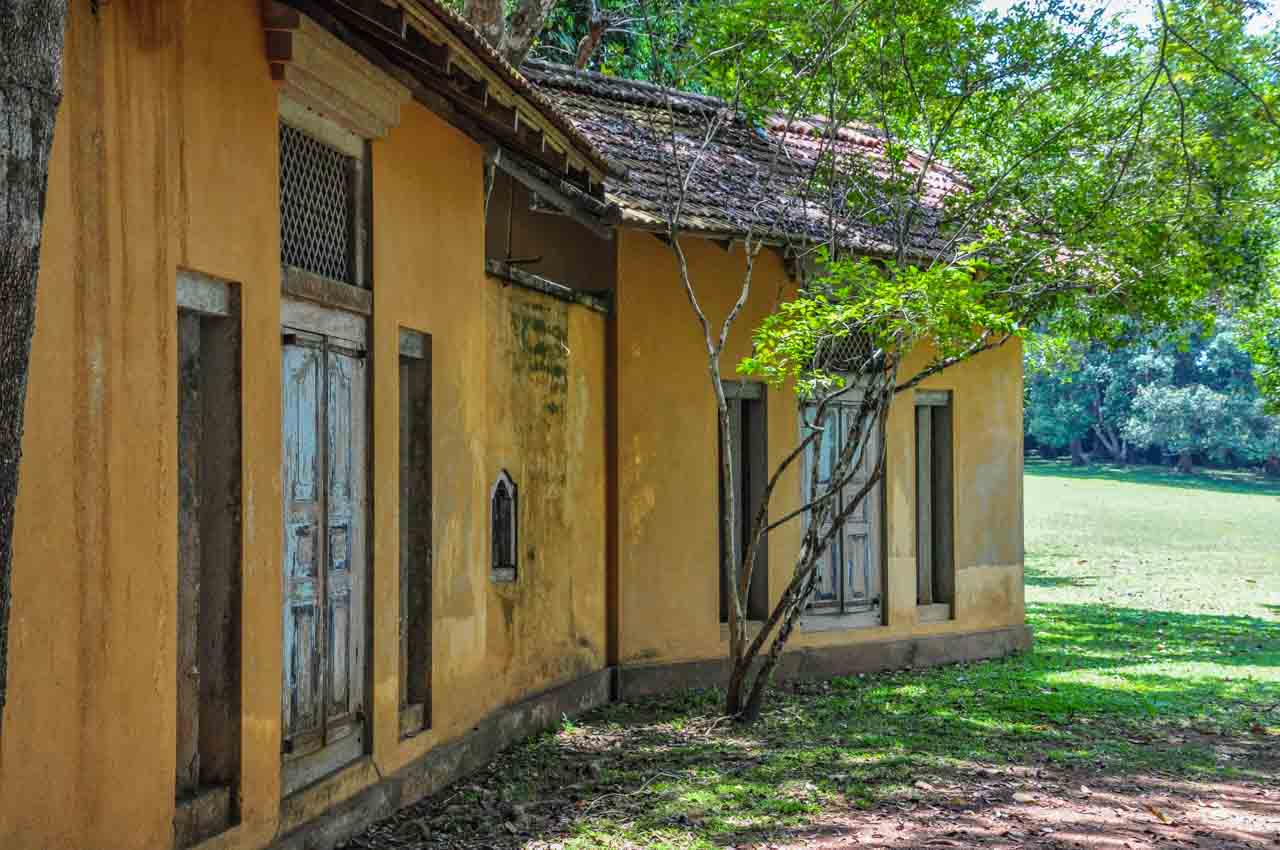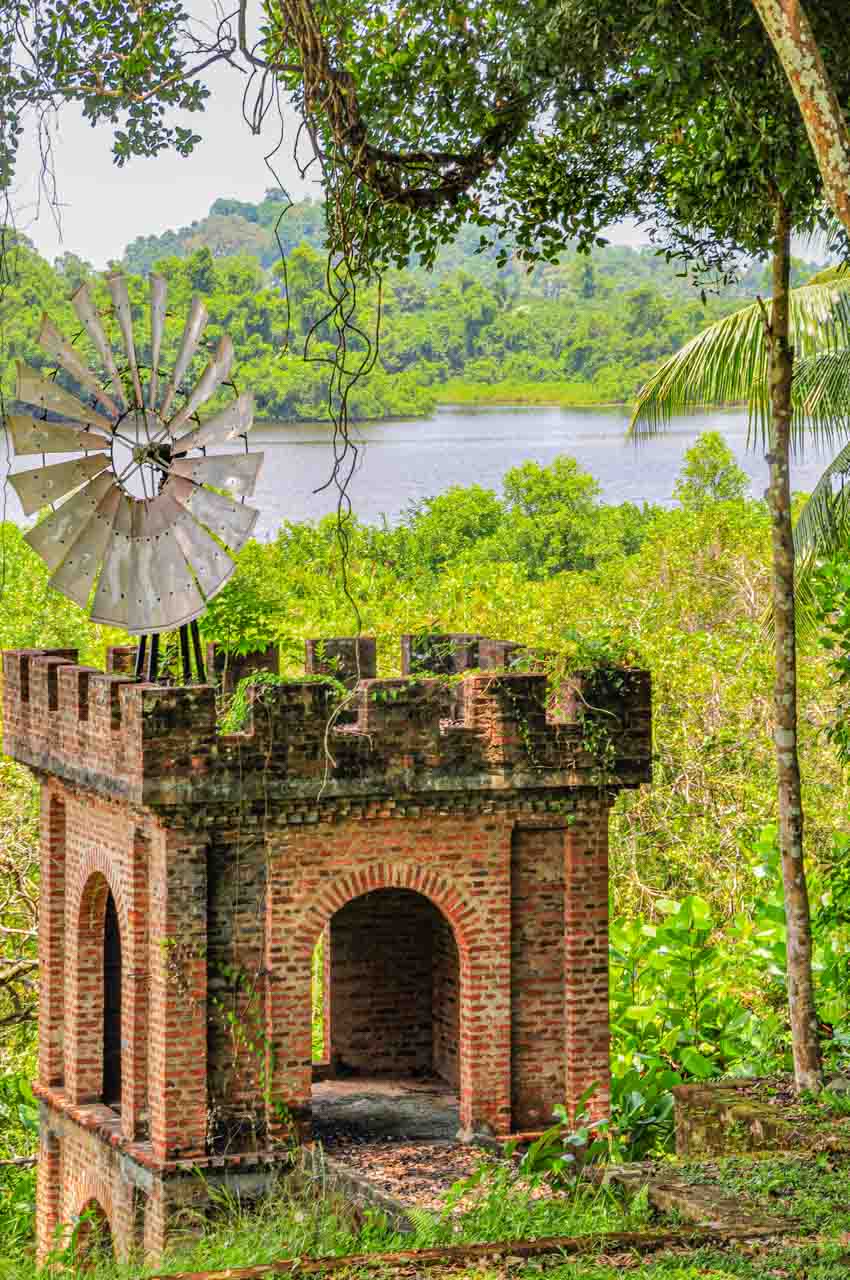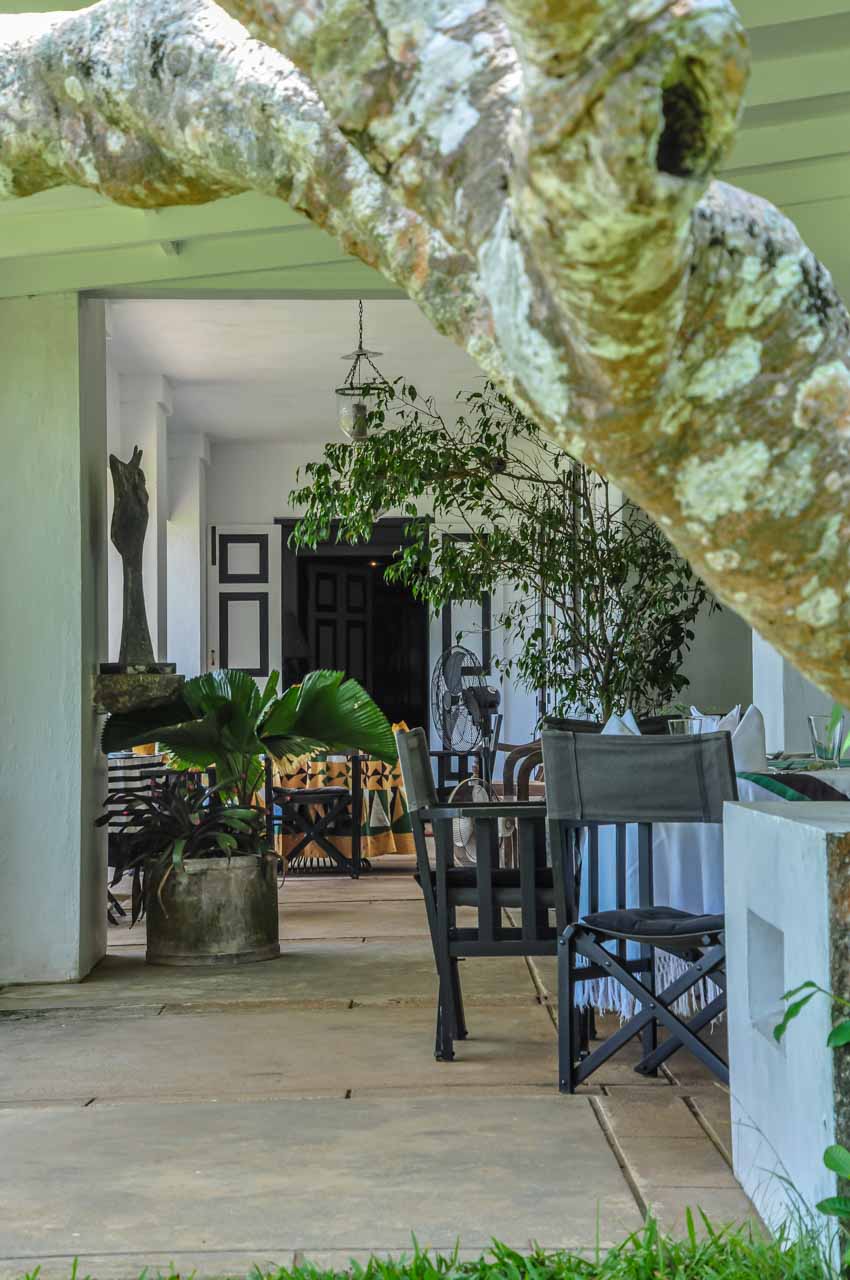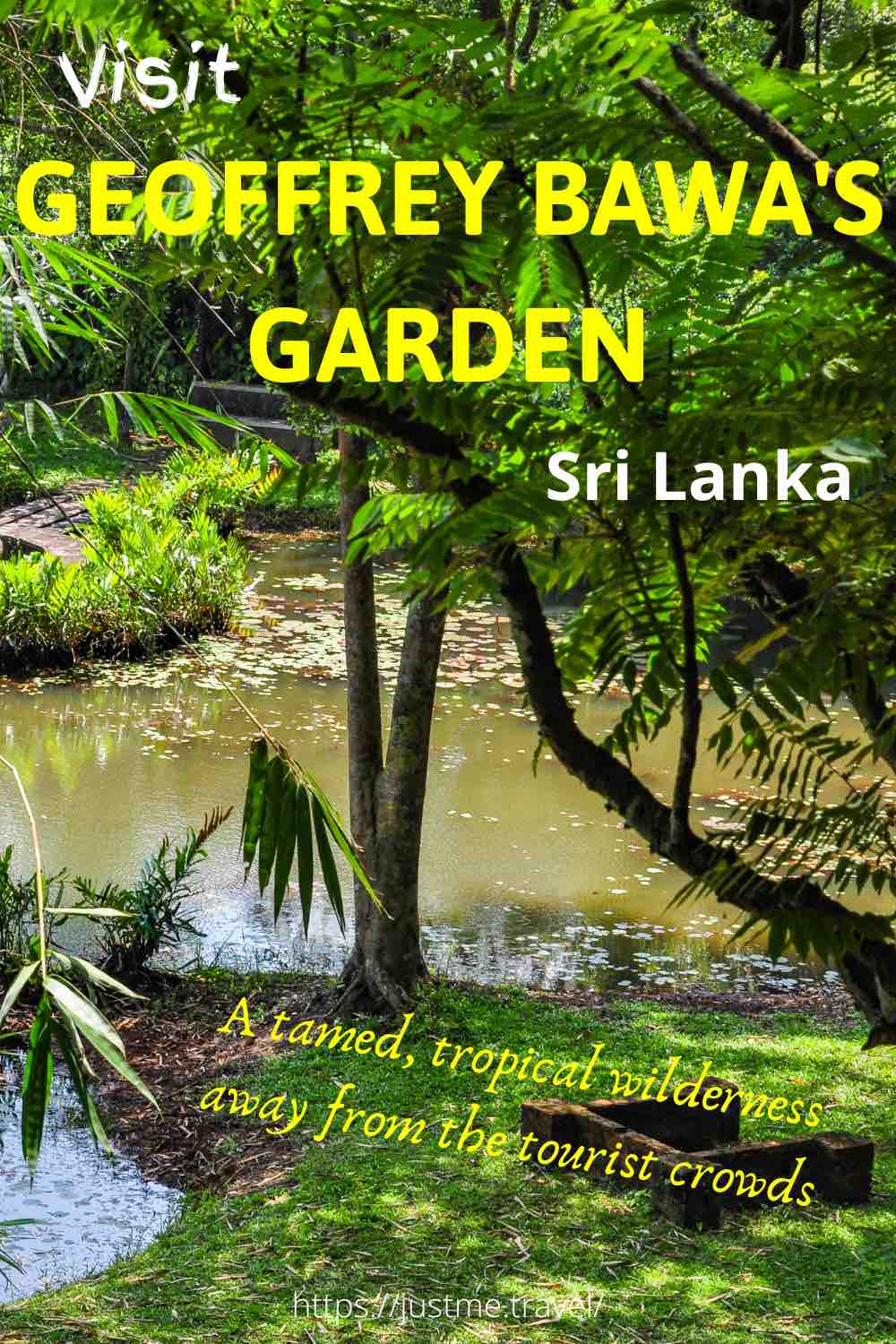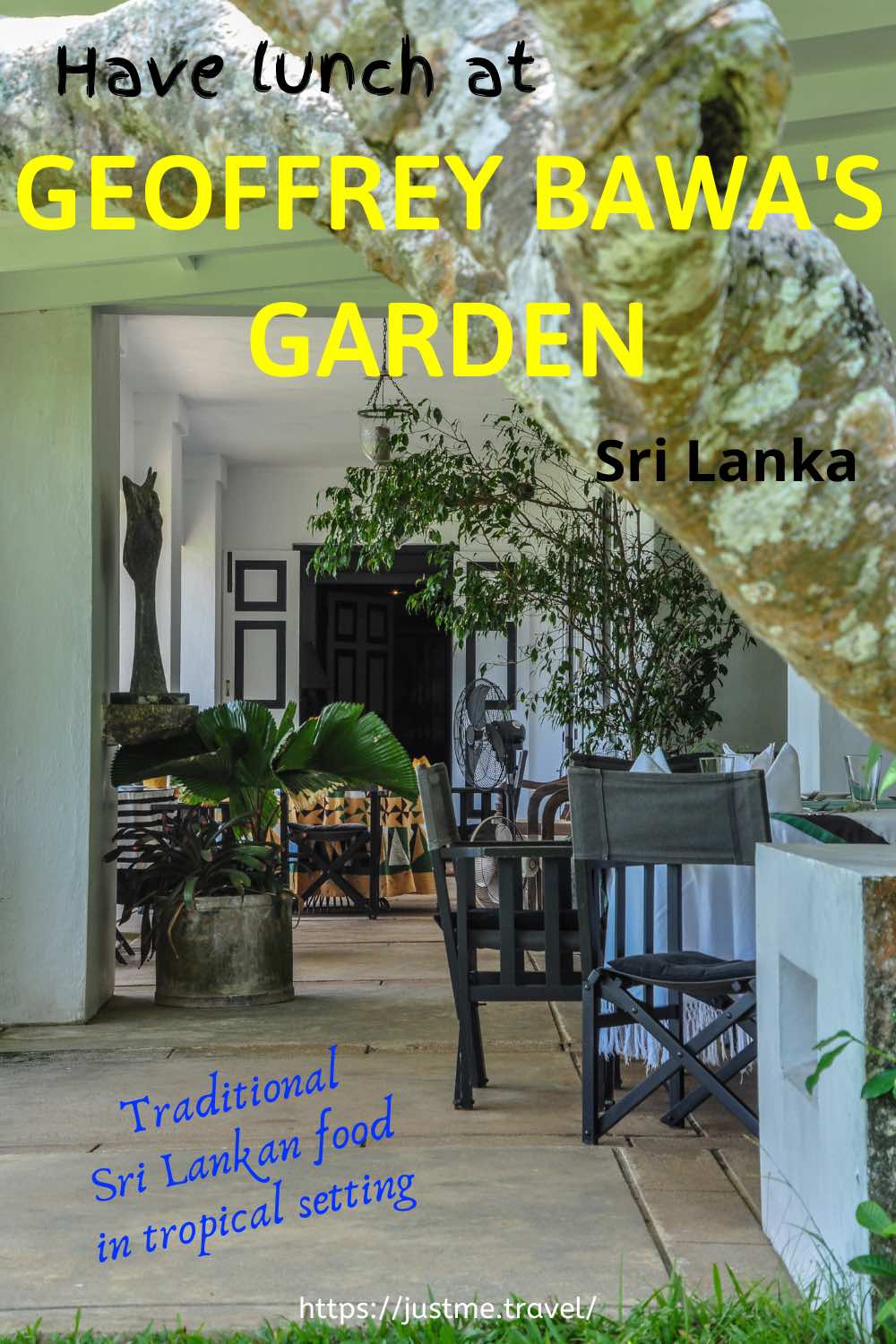Photos of an Astounding Untamed Garden by Geoffrey Bawa.
Geoffrey Bawa is still regarded as one of the greatest architects to have ever lived. But his genius was not confined to bricks and mortar. On Lunuganga Estate, Geoffrey’s country home in Sri Lanka, he brought together architecture, art, plants, and the odd cow to create a magnificent, controlled landscape of untamed wilderness.
Finding things to do in Sri Lanka away from the maddening crowds is an excellent reason to visit Geoffrey Bawa’s garden as it is largely undiscovered by tourists, being something different from the ‘usual’ tourist attraction.
I have my sister to thank for our visit to Geoffrey Bawa’s garden – not to be confused with Brief Garden, the former estate of Geoffrey’s older brother Bevis Bawa.
While researching things to do for our trip to Sri Lanka, that teardrop-shaped nation sitting at the bottom of India in the Indian Ocean, my sister discovered a reference to Geoffrey Bawa’s garden on his Lunuganga Estate. How could we not include a garden described as “the most seductive, passionate pleasure gardens of the twentieth century” (lunuganga.com) on our itinerary?
So, who was Geoffrey Bawa?
Geoffrey Bawa (1919-2003) was Sri Lanka’s most well-known architect and is deemed the most influential Asian architect of his time. For those architect enthusiasts reading this post, he was one of the founding fathers of the architectural style known as “tropical modernism”. Geoffrey Bawa is probably best known for designing Sri Lanka’s Houses of Parliament.
Living permanently in Colombo, Lunuganga Estate, situated on the banks of Lake Dedduwa in Bentota (midway between Colombo and Galle), was Geoffrey Bawa’s country retreat. Here, on 23 acres, he spent 50 years turning this abandoned rubber plantation (and, before that, a cinnamon plantation) into eclectic gardens of multiple shades of green.
We explored Geoffrey Bawa’s garden with the Head Curator on a 2-hour private tour.
Don’t expect to find manicured gardens of colourful flowers, neat borders, and gurgling fountains. But expect an untamed but controlled tropical wilderness of sudden vistas, intimate groves, sculptures, and wide landscapes. I found Bawa’s garden a place of peace, tranquillity, and restfulness.
Lunuganga Estate – Geoffrey Bawa’s garden
Lunuganga Estate is about 500 metres long and 300 metres at its widest. There is no spot where you can view the garden in its entirety. Instead, it is a journey from one seemingly disconnected space to another that somehow Geoffrey managed to create a cohesive whole.
Take a stroll with me on a visual tour of Geoffrey Bawa’s garden.
The Hen House
Geoffrey Bawa famously designed Sri Lanka’s Parliament House. He then created his hen house (chicken coup) on Lunuganga Estate in the same style. Take from that what you will!
Sandela Pavilion
The Sandela Pavilion, also known as the Glass House, is an open, airy space and served as Geoffrey Bawa’s office. From here, he had a lovely view of the lake and could see anyone who arrived at the main gate.
The Red Terrace
The Red Terrace derives its name from the red laterite ground surface, produced by the decomposition of the underlying rocks.
With its views of Lake Dedduwa and the Water Garden at the bottom of the hill, the Red Terrace was a favourite spot for Geoffrey to have lunch.
The Water Garden
The Water Garden is a tropical oasis. The pond is shaped like a butterfly and is filled with pink flowering water lilies. A bench seat takes pride of place beside the pond in the shade of trees. Here Geoffrey would sit and ring the garden bell for his gin and tonic to be brought to him.
The Water Garden incorporates ornamental rice paddies stretching along the banks of Lake Dedduwa, adding to the eclectic nature of Geoffrey Bawa’s garden design.
Sculptures around the garden
There are several sculptures around the garden.
The rusted metal sundial sculpture in the Water Garden has an air of decline and abandonment.
The sculpture of the pagan god Pan was sculptured by one of Geoffrey’s Tamil assistants and called “Hindu” Pan by Geoffrey. No reason has been given as to why he called it such. Perhaps because a Tamil sculpted it?
The Plain of Jars
In a setting of sloping grassy plains surrounded by forest, the Ming dynasty-style jars that dot this part of the landscape were added here by Geoffrey.
The jars are not confined to this area of the garden but were purposefully placed by Geoffrey throughout the garden. Geoffrey Bawa had a knack for controlling the landscape without taming it.
Jackfruit
Lunuganga Estate is set in Sri Lanka’s wet tropical zone, so tropical fruits, like the Jackfruit, are not unknown and grow to large proportions.
Cinnamon Hill House
In a forested area on the western slope, Geoffery used Cinnamon Hill House as a studio from where he created his architectural designs. It also served as accommodation for his guests and was the last addition to the Garden.
Geoffrey Bawa’s home
The tour ended with walking past a most unusual windmill before the gentle climb up Cinnamon Hill for lunch on the wide veranda of Geoffrey Bawa’s former home on Lunuganga Estate, now a boutique hotel. Lunch consisted of a set menu of delicious traditional Sri Lankan curries.
The home sits at the top of Cinnamon Hill, allowing breathtaking views over Lake Dedduwa. Lunch was a visual and gastronomic pleasure.
The gardens are open to the public, and the buildings on the estate operate as boutique country accommodation
Guided tours of the gardens run daily: 9.30 am, 11.30 am, 2.00 pm, and 3.30 pm. A reservation is essential if you want to have lunch whilst visiting the estate. Check the Geoffrey Bawa Trust website for garden tour prices and how to book lunch.
Guests staying on Lunuganga Estate can wander the gardens without needing a guided tour.
How to get from Colombo to Lunganga Estate, Bentota
The drive from Colombo to Lunuganga Estate will take about 1 hour and 14 minutes, for a distance of 83.9 kilometres.
But what if I don’t have a car? Can I still get to Geoffrey Bawa’s garden?
You have three options if you don’t have the means to drive to Lunuganga Estate: train, bus, or taxi. The train is the fasted option, taking 1 hour and 6 minutes and costing AU$5 – AU$7, including the taxi fare from Aluthgama Station to the estate. For a taxi from Colombo to Lunuganga Estate, the most expensive option, expect to pay AU$30 – AU$40.
Refer to the website, Rome2rio, for details on schedules, costs, routes, travel times, and operators.
Geoffrey Bawa’s garden is not a formal garden in the European sense. Nor is it a major tourist attraction. But that’s what makes it interesting and a bucket list thing to do in Sri Lanka.
Editor’s Note: I originally published this blog post in February 2019 and have updated it for accuracy and comprehensiveness.
Disclaimer: This post contains no affiliate links. All views and opinions are my own and non-sponsored. All photos are my own and remain the copyright of Just Me Travel.
© Just Me Travel 2018-2022.
Please leave a comment below to share your thoughts. Would you visit Lunuganga Estate and Geoffrey Bawa’s garden if visiting Sri Lanka?
Like this post? Save it for later!
Are you looking for more ideas on destination Sri Lanka? Then don’t miss these posts:
WHAT IS THE MISSING TRUTH ABOUT CLIMBING SRI LANKA’S LITTLE ADAM’S PEAK
HOW TO SPEND ONE PERFECT DAY IN GALLE FORT – Your Ultimate Guide (2024 Updated)
WALKING THE RAILWAY LINE FROM ELLA TO DEMODARA, SRI LANKA
WALLAWWA – a tranquil luxury boutique hotel in Colombo City
ULTIMATE SRI LANKA ITINERARY – The best of Sri Lanka in 20 Days
Author’s Note: Please check the latest travel restrictions before planning any trip, and always follow government advice.

